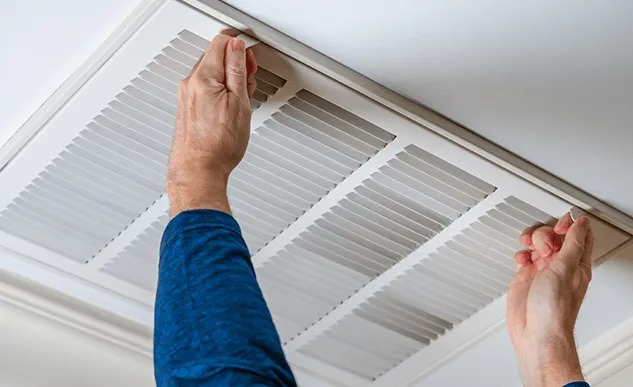IT facilities are home to the backbone of many modern businesses, housing servers, computers, and sensitive equipment that require optimal conditions to operate efficiently. One of the key factors in maintaining these conditions is temperature control. Overheating in IT environments can cause system malfunctions, data loss, or even permanent damage to expensive equipment. A crucial part of preventing such issues is implementing proper ventilation systems.
In this blog, we’ll explore how effective ventilation can prevent overheating in IT facilities, the role it plays in maintaining a stable environment, and how services like air conditioning maintenance in London contribute to the longevity and functionality of IT infrastructure.
The Importance of Temperature Control in IT Facilities
Servers and computers in IT facilities generate significant heat, and without proper cooling, they can quickly overheat. Even slight temperature increases can affect performance, leading to system slowdowns or, in more severe cases, equipment failure. Therefore, regulating the temperature of these environments is vital.
The Role of Heat in IT Equipment
IT equipment such as servers, networking hardware, and workstations function best when they are within a specific temperature range. If the environment becomes too hot, the internal components of these devices, like CPUs and hard drives, can suffer from thermal stress, causing them to malfunction. This can result in data loss, slower processing speeds, or complete hardware failure.
Thus, ensuring that these systems remain cool enough to operate without risk is one of the primary objectives of both ventilation systems and air conditioning.

How Ventilation Services Help Prevent Overheating
While air conditioning systems are typically used to cool an entire space, ventilation systems play a crucial complementary role in preventing overheating. Proper ventilation ensures that warm air is efficiently expelled from the IT facility and replaced with cooler air. This process is vital in maintaining consistent temperatures across all devices, ensuring that no part of the facility becomes a hot spot.
How Ventilation Works
Ventilation involves the movement of air to improve airflow and expel excess heat. In IT facilities, this often includes the use of exhaust fans, air ducts, and ventilation shafts designed to circulate and move hot air out of the building. The intake of fresh, cooler air from the outside or an air-conditioned area then replaces the warm air, maintaining an ideal temperature for the servers and other equipment.
Key Ventilation Solutions Include:
- Exhaust Fans: These draw hot air out of the facility, particularly from areas like server rooms where heat buildup is most prominent.
- Air Ducts: A network of ducts circulates the air, ensuring even distribution of cool air and the removal of warm air.
- Ventilation Shafts: These are vertical shafts that allow hot air to rise naturally and exit the building, while cooler air enters from the lower areas.
Balancing Airflow and Temperature Control
Proper ventilation is not just about removing hot air; it’s also about ensuring a balance of airflow to prevent temperature fluctuations. While air conditioning systems cool the air, ventilation systems regulate its movement to ensure that cooling efforts are evenly distributed throughout the facility.
Effective ventilation helps to keep all areas of the IT facility within the required temperature range, ensuring that no part of the room becomes too hot or too cold. This balanced airflow is vital for preventing overheating and ensuring the longevity of the equipment.
How Air Conditioning Maintenance Contributes to Effective Ventilation
While ventilation services are essential, air conditioning systems also play a crucial role in maintaining the temperature in IT facilities. Air conditioning units work alongside ventilation systems to cool the air, creating a controlled environment where IT equipment can thrive.
However, like any system, air conditioning requires regular maintenance to function optimally. Without proper air conditioning maintenance systems can become inefficient, potentially allowing temperatures to rise and affecting the overall cooling process.
The Role of Air Conditioning in IT Facility Temperature Control
Air conditioning systems cool the air, reducing the ambient temperature in the room. In IT facilities, this helps keep temperatures stable, preventing the internal components of servers and other equipment from overheating. However, if the air conditioning system is not regularly maintained, it may lose efficiency, leading to higher temperatures and potential overheating issues.
Routine maintenance tasks include cleaning filters, checking refrigerant levels, inspecting coils, and ensuring the system is functioning as intended. Regular air conditioning maintenance London services ensure that the cooling system is working at its best, providing the necessary cooling for the facility while supporting the ventilation system’s role in regulating airflow.

The Risks of Overheating in IT Facilities
Overheating in an IT facility can have several negative consequences, ranging from equipment malfunction to costly downtime. Without adequate temperature control, servers, routers, and other essential hardware can become unstable, leading to potential system crashes or failures.
Potential Risks Include:
- Hardware Failure: Overheated components are at risk of being permanently damaged, which may require expensive repairs or replacements.
- Reduced Performance: High temperatures can cause devices to throttle their processing power to prevent further overheating, leading to slower performance.
- Increased Risk of Data Loss: Prolonged overheating may result in hard drive failures, causing loss of critical data stored on servers or workstations.
- Increased Energy Costs: Inefficient cooling and improper airflow can lead to increased energy consumption as air conditioning units work harder to cool the facility.
Regular maintenance of both ventilation and air conditioning systems helps mitigate these risks by ensuring that the environment stays at optimal temperatures, reducing the chances of equipment failure and performance issues.
Benefits of Professional Ventilation and Air Conditioning Services
By investing in professional ventilation services and maintenance in London, IT facilities can ensure their equipment runs smoothly and efficiently. These services offer several benefits, including:
- Improved Energy Efficiency: Regular maintenance ensures that both the ventilation system and air conditioning units are functioning efficiently, reducing energy consumption and lowering operational costs.
- Prolonged Equipment Lifespan: Well-maintained systems prevent overheating and reduce wear and tear on IT equipment, ultimately extending its lifespan.
- Enhanced Performance: By maintaining an optimal temperature, both the ventilation system and air conditioning contribute to smoother, faster performance of IT systems.
- Reduced Downtime: Regular maintenance helps prevent unexpected breakdowns, ensuring minimal downtime and continuity of operations.
Conclusion
In IT facilities, effective ventilation and regular air conditioning maintenance are critical for preventing overheating and ensuring that equipment operates efficiently. Both systems work in tandem to maintain a consistent temperature, regulate airflow, and enhance the overall environment. Without proper ventilation services and air conditioning maintenance in London, facilities are at risk of costly repairs, equipment failure, and performance issues.
For businesses looking to ensure the longevity and performance of their IT equipment, investing in professional maintenance and ventilation solutions is key. To keep your IT facility in peak condition, trust Hamilton Air Conditioning London for expert air conditioning maintenance and ventilation services.

